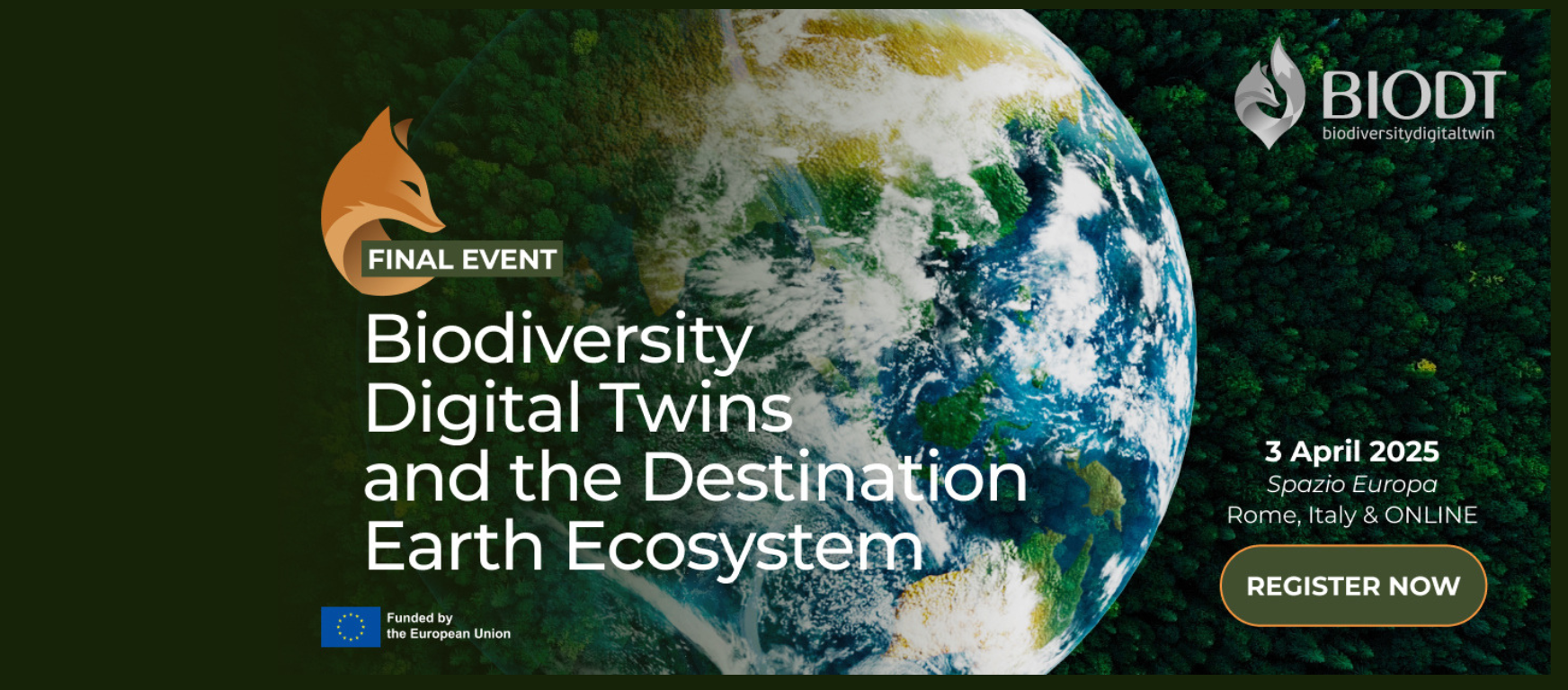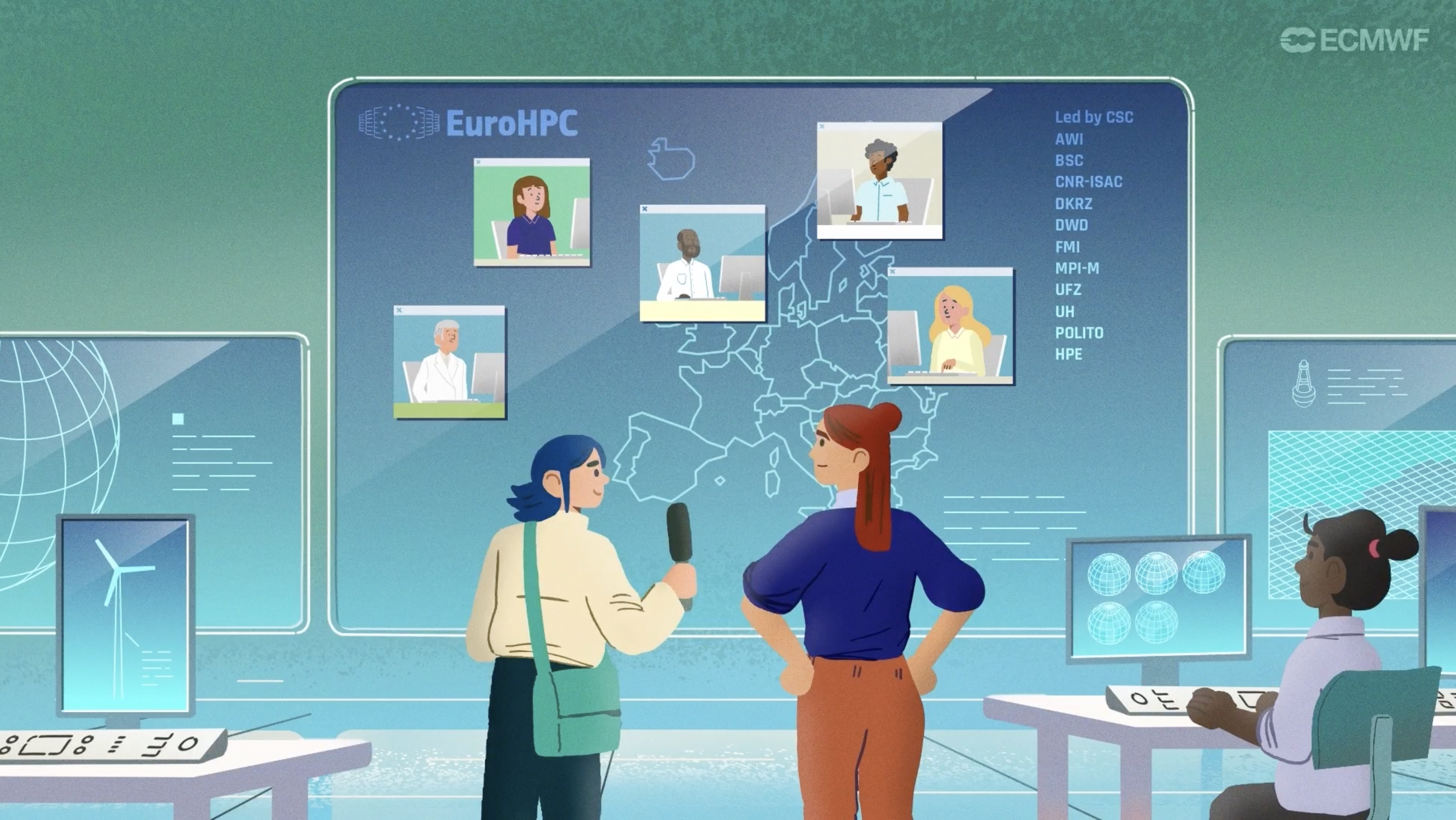
Image credit: BioDT
The Horizon Europe Biodiversity Digital Twin (BioDT) project addresses global biodiversity challenges through high-performance computing and AI-driven modelling. After three years of research, the project will showcase the BioDT’s scientific achievements with a final event on 3 April 2025 in Rome and online.
The Final Event of the BioDT project will showcase the BioDT’s scientific achievements, explore its role in the wider European digital twin ecosystem, and highlight its collaboration with the EU-funded Destination Earth (DestinE) initiative. The Horizon Europe project BioDT started in June 2022 and ends on 31 May 2025. Discussions in Rome will also focus on sustainability, the long-term impact of BioDT on biodiversity monitoring and policy, and interoperability with DestinE.
ECMWF’s Thomas Geenen will present DestinE’s ecosystem, with a focus on interoperability with initiatives such as BioDT. His presentation is part of an overview session on digital twins and starts at 10:50 CET on 3 April.
The hybrid event will also address the long-term sustainability of digital twin technologies, focusing on challenges in leveraging high-performance computing resources and data integration across European research infrastructures. Experts will discuss strategies for reusing and exchanging biodiversity data, as well as future steps and the importance of fostering collaboration between scientific communities and policymakers.
The BioDT Final Event will take place at Spazio Europa in Rome on 3 April 2025 and online. Registration is mandatory and open until 26 March.
For more details and to register, visit the official event page.
Destination Earth is a European Union-funded initiative launched in 2022, with the aim to build a digital replica of the Earth system by 2030. The initiative is being jointly implemented under the leadership of DG CNECT by three entrusted entities: the European Centre for Medium-Range Weather Forecasts (ECMWF), responsible for the creation of the first two ‘digital twins’ and the ‘Digital Twin Engine’, the European Space Agency (ESA) responsible for building the ‘Core Service Platform’, and the European Organisation for the Exploitation of Meteorological Satellites (EUMETSAT), responsible for the creation of the ‘Data Lake’.
We acknowledge the EuroHPC Joint Undertaking for awarding this project strategic access to the EuroHPC supercomputers LUMI, hosted by CSC (Finland), and the LUMI consortium, Marenostrum5, hosted by BSC (Spain) Leonardo, hosted by Cineca (Italy) and MeluXina, hosted by LuxProvide (Luxembourg) through a EuroHPC Special Access call.
More information about Destination Earth is on the Destination Earth website and the EU Commission website.
For more information about ECMWF’s role visit ecmwf.int/DestinE
For any questions related to the role of ECMWF in Destination Earth, please use the following email links:
